Abstract
The formolized tanned sheep erythrocyte haemagglutination test has been applied to an immuno-malariometric study in Australian New Guinea to determine whether the haemagglutination titre reflects a subject's immune state and to measure the effect of malaria control operations on a population's immunity. Two population groups were studied—one (unprotected) living in holoendemic malaria conditions, the other (protected) living in an area subject to malaria control measures for four years.
An increase in both serological positivity rates and geometric mean titres among the unprotected group with increasing age suggests that the test does serve to assess the state of immunity; the corresponding rates were much lower in the protected population, particularly among the children.
The authors foresee the possible use of the haemagglutination test as a supplement to other procedures in assessing the progress of a malaria campaign. They, note, however, that more immuno-malariometric studies on populations subject to different degrees of malaria endemicity will need to be carried out before the relationship between the immune state and serological results can be clearly established.
Full text
PDF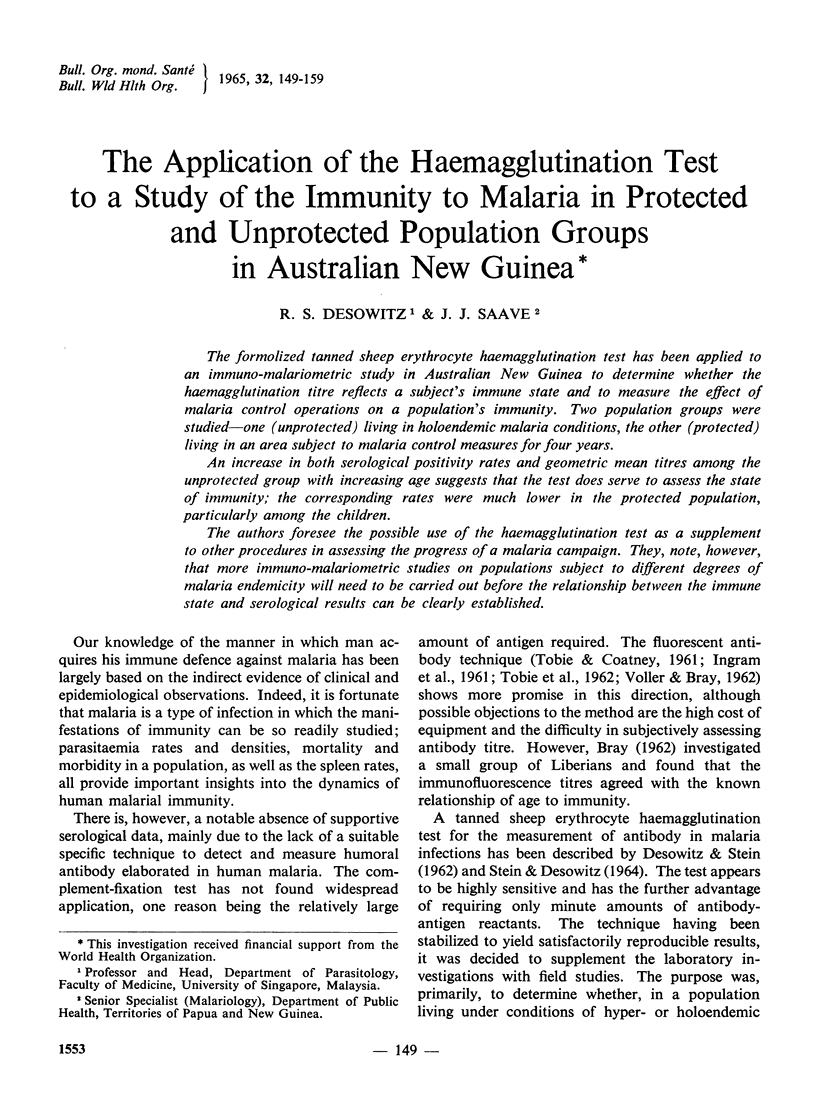
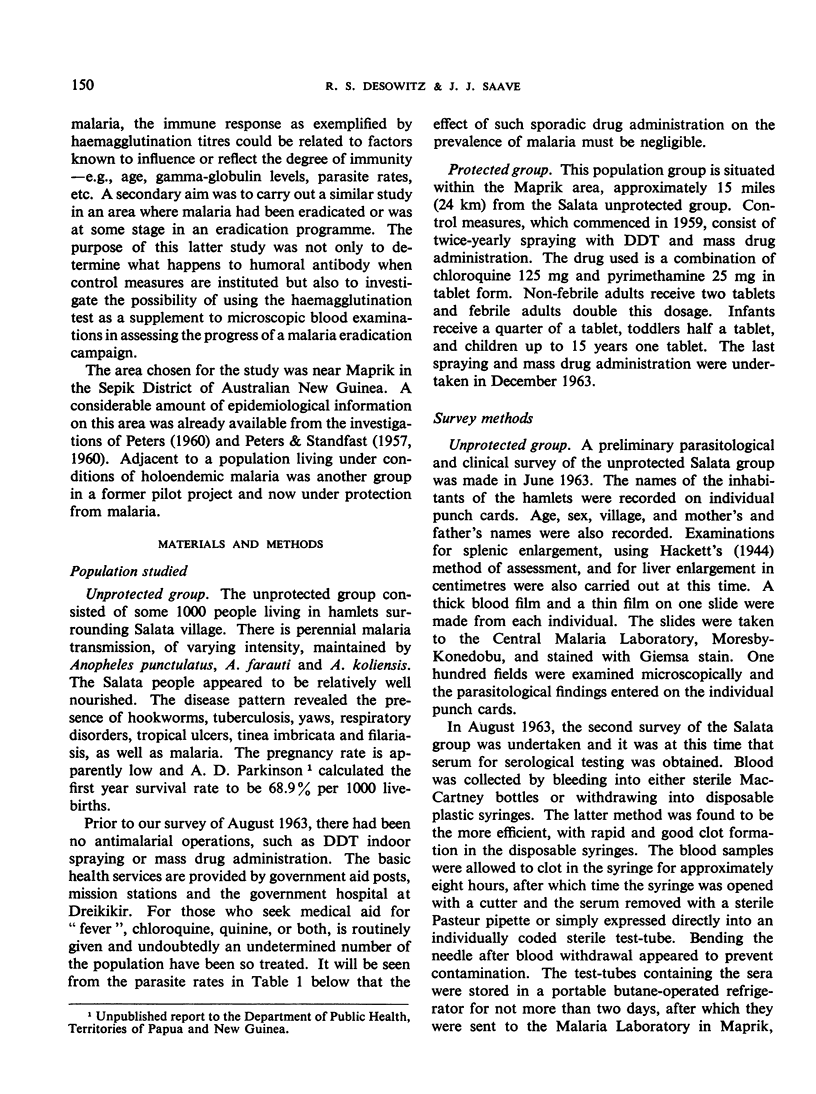
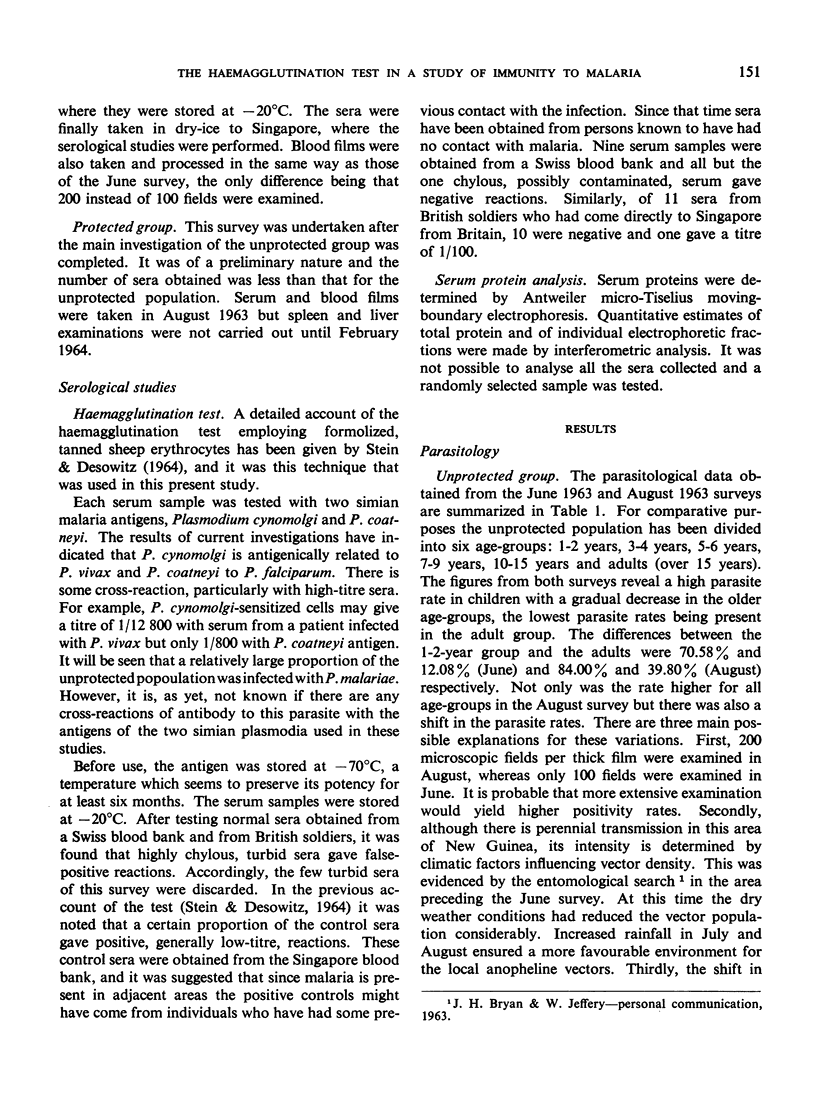
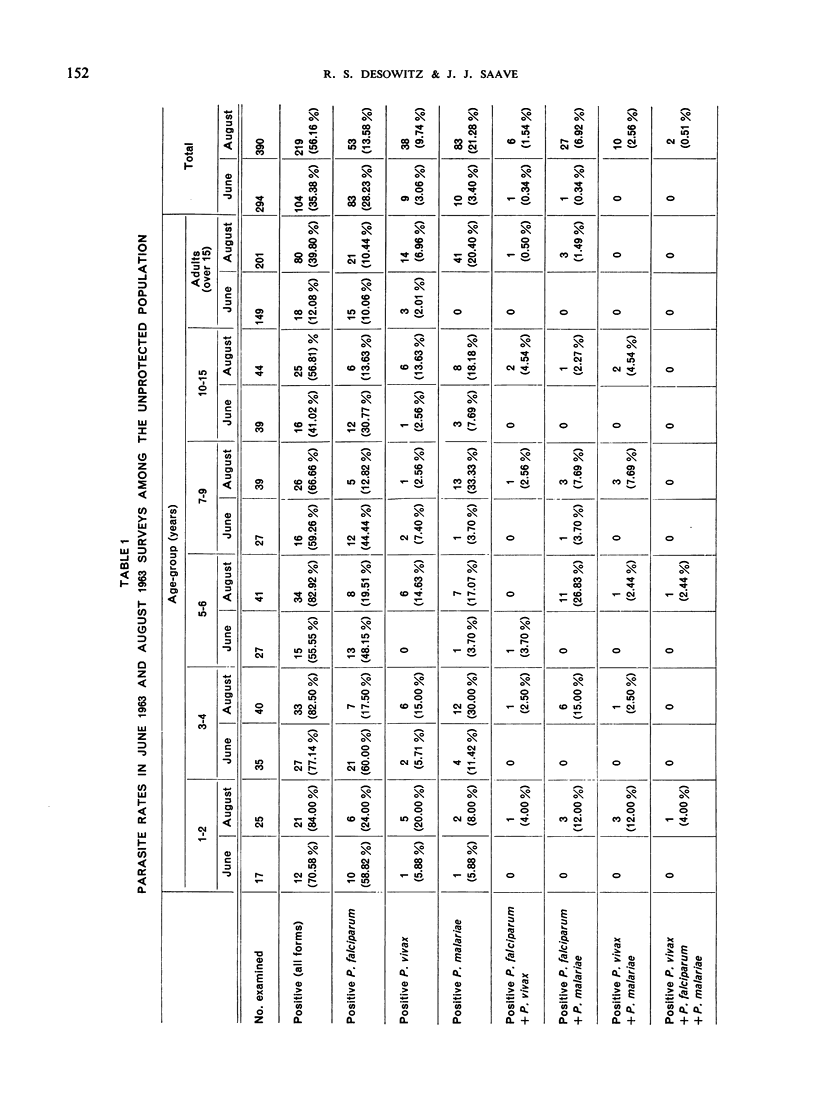
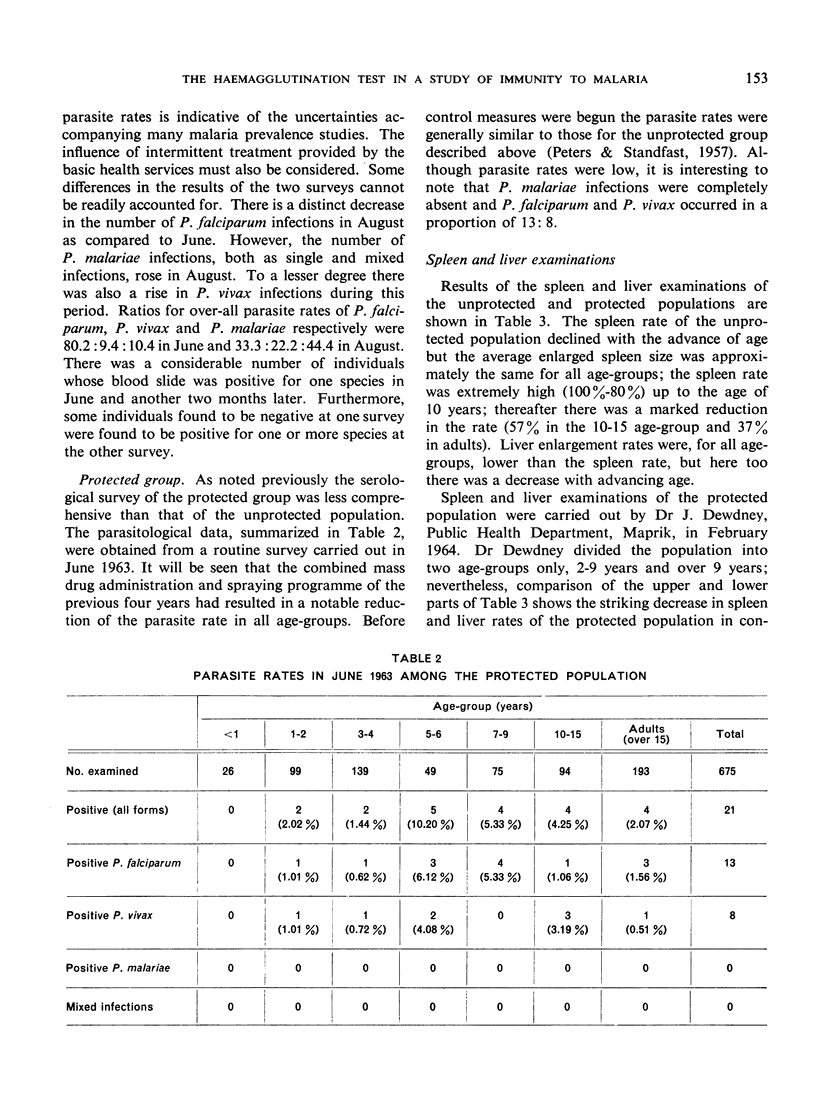
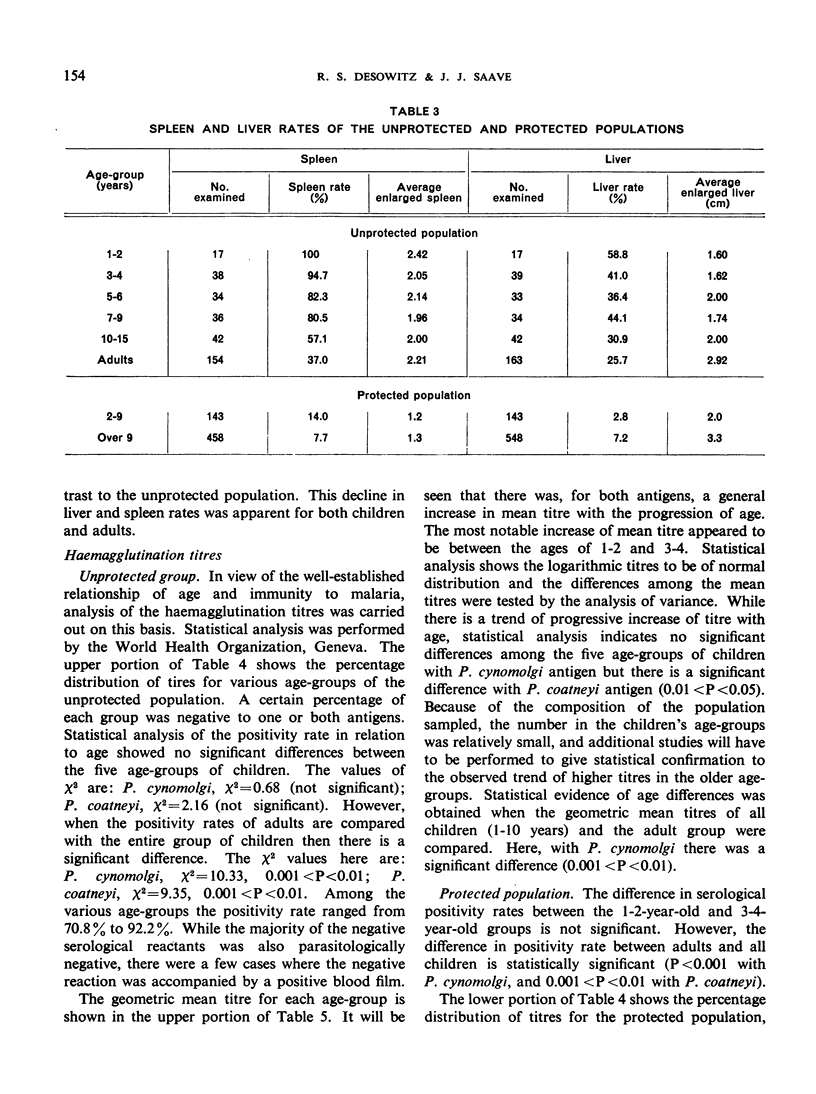
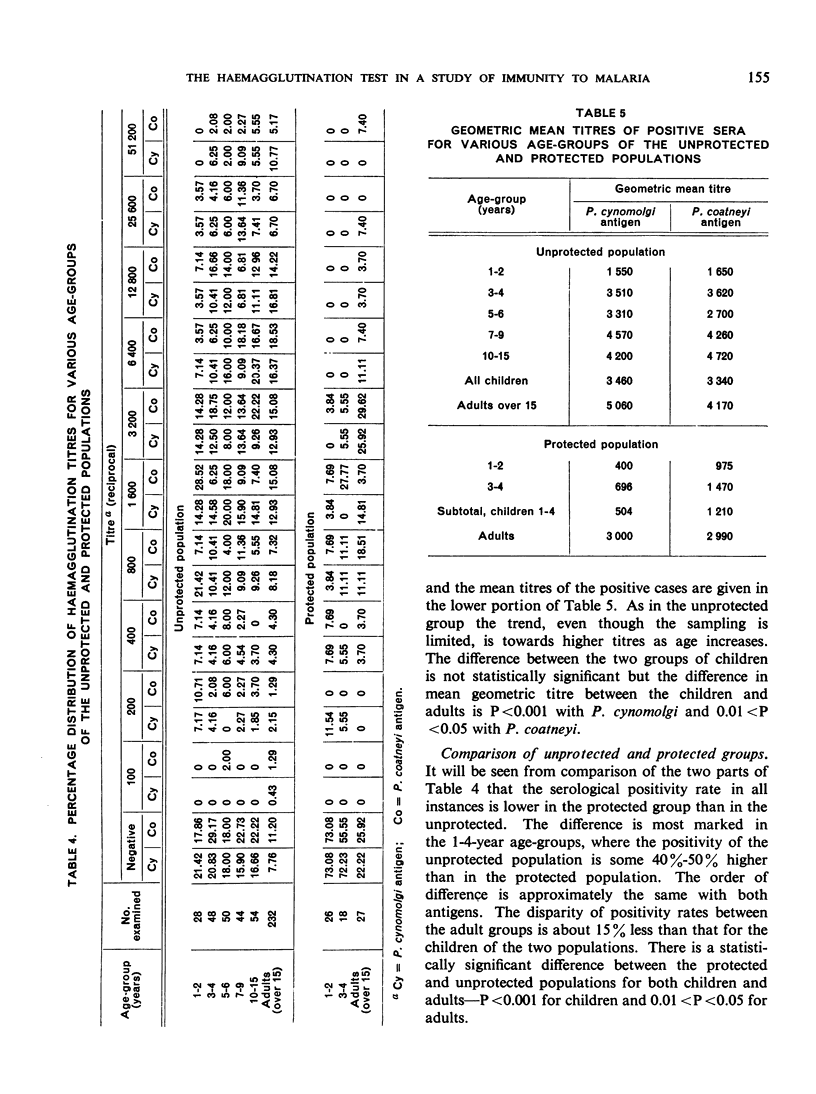
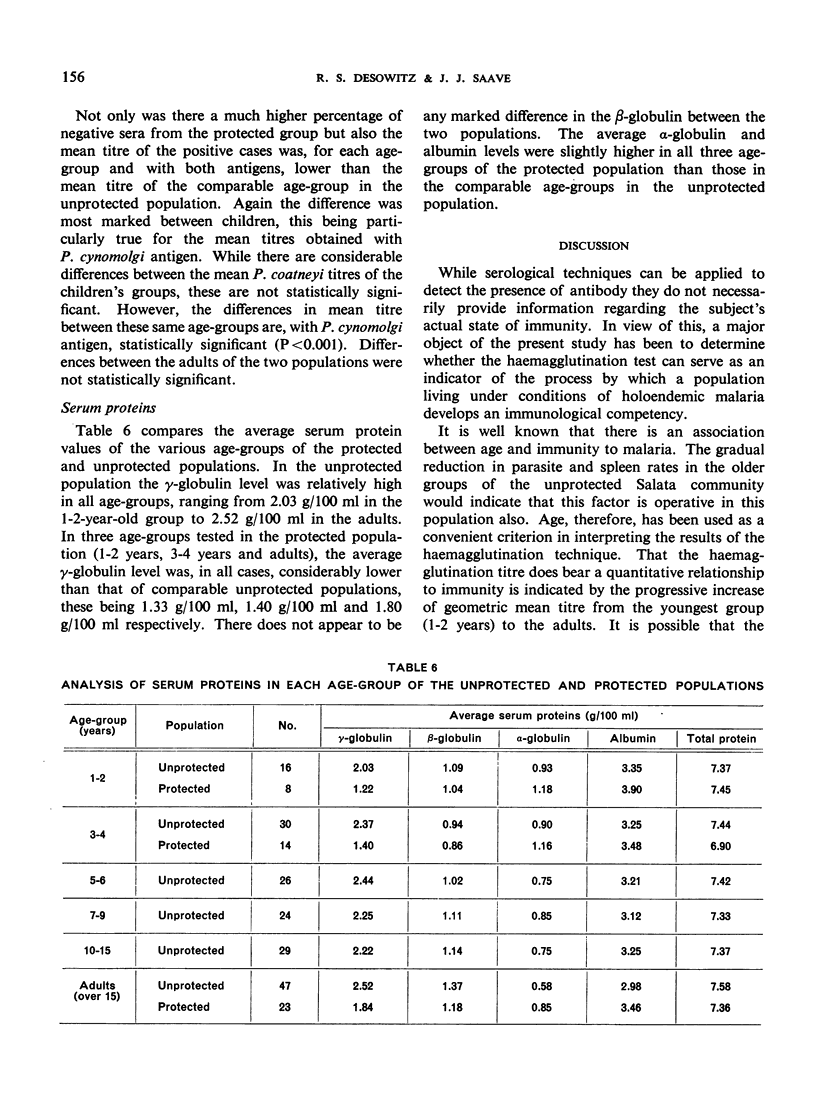
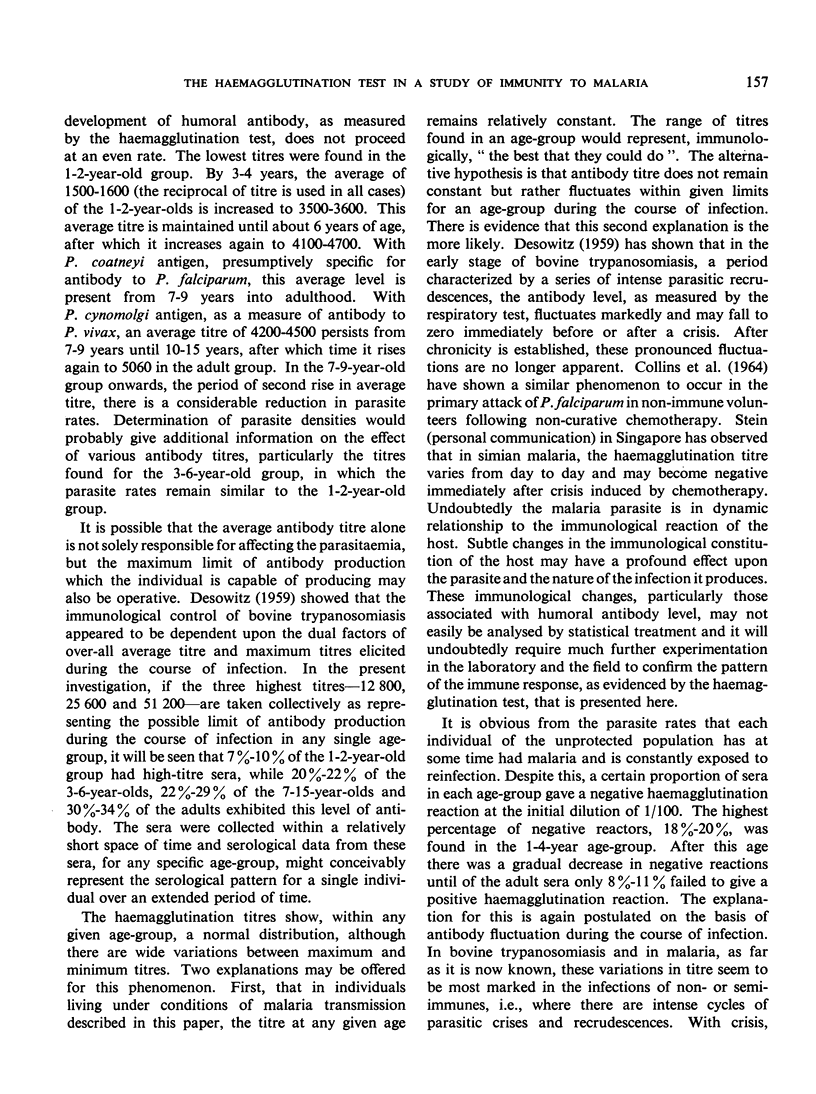
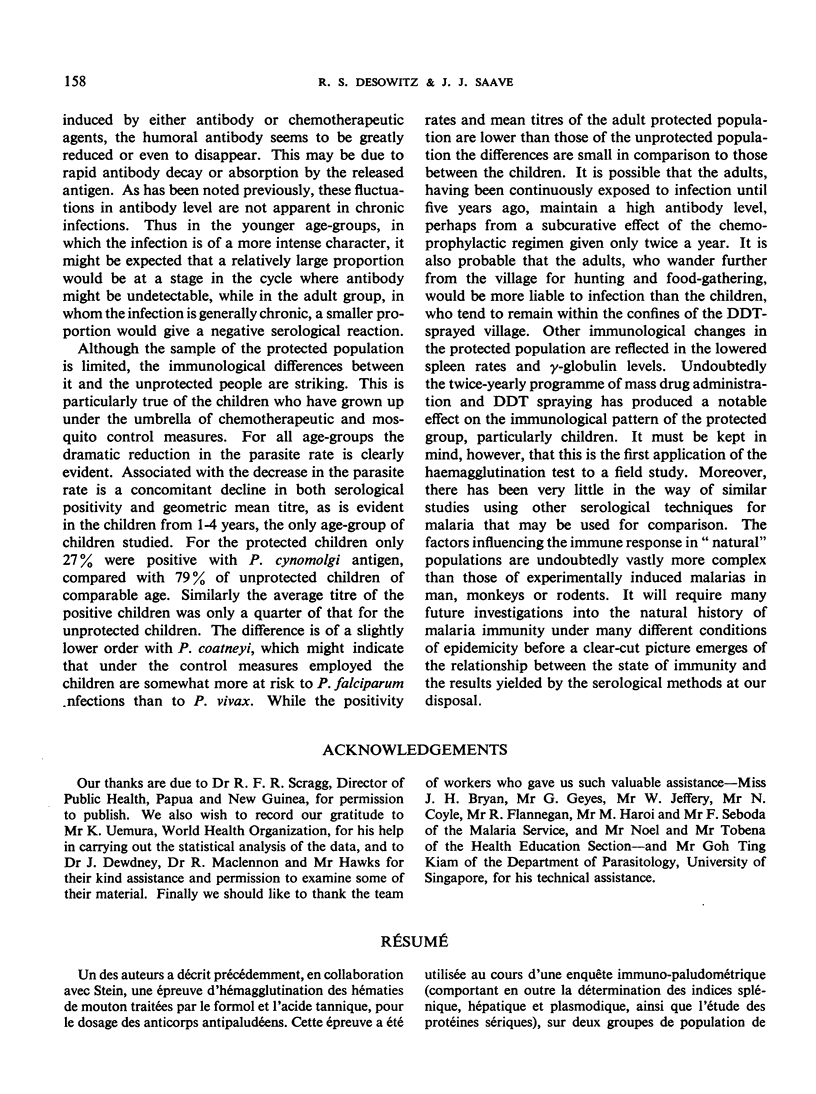
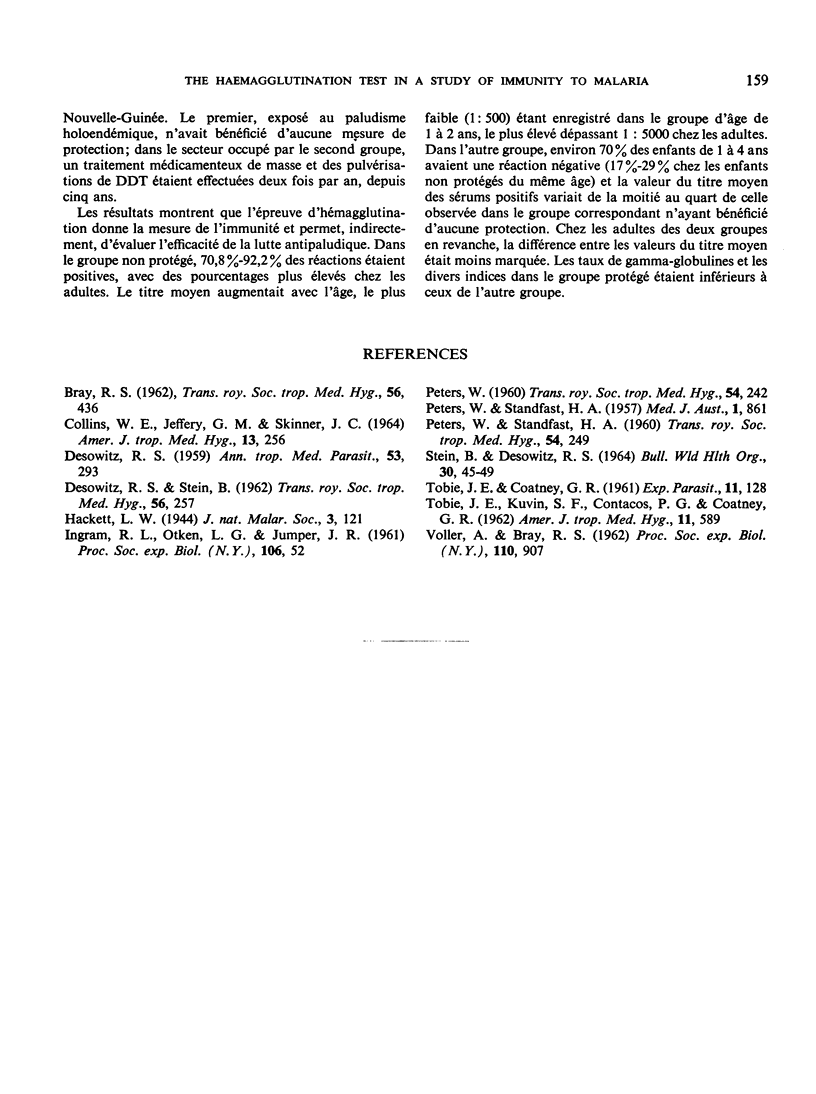
Selected References
These references are in PubMed. This may not be the complete list of references from this article.
- COLLINS W. E., JEFFERY G. M., SKINNER J. C. FLUORESCENT ANTIBODY STUDIES IN HUMAN MALARIA. II. DEVELOPMENT AND PERSISTENCE OF ANTIBODIES TO PLASMODIUM FALCIPARUM. Am J Trop Med Hyg. 1964 Mar;13:256–260. doi: 10.4269/ajtmh.1964.13.256. [DOI] [PubMed] [Google Scholar]
- DESOWITZ R. S. Studies on immunity and host-parasite relationships. I. The immunological response of resistant and susceptible breeds of cattle to trypanosomal challenge. Ann Trop Med Parasitol. 1959 Sep;53:293–313. [PubMed] [Google Scholar]
- PETERS W., STANDFAST H. A. Studies on the epidemiology of malaria in New Guinea. Part II. Holoendemic malaria--the entomological picture. Trans R Soc Trop Med Hyg. 1960 May;54:249–254. doi: 10.1016/0035-9203(60)90069-9. [DOI] [PubMed] [Google Scholar]
- PETERS W., STANDFAST H. Report on a malaria survey in the Sepik district. Med J Aust. 1957 Jun 22;44(25):861–868. doi: 10.5694/j.1326-5377.1957.tb59970.x. [DOI] [PubMed] [Google Scholar]
- PETERS W. Studies on the epidemiology of malaria in New Guinea. Part I. Holoendemic malaria--the clinical picture. Trans R Soc Trop Med Hyg. 1960 May;54:242–249. doi: 10.1016/0035-9203(60)90068-7. [DOI] [PubMed] [Google Scholar]
- STEIN B., DESOWITZ R. S. THE MEASUREMENT OF ANTIBODY IN HUMAN MALARIA BY A FORMOLIZED TANNED SHEEP CELL HAEMAGGLUTINATION TEST. Bull World Health Organ. 1964;30:45–49. [PMC free article] [PubMed] [Google Scholar]
- TOBIE J. E., COATNEY G. R. Fluorescent antibody staining of human malaria parasites. Exp Parasitol. 1961 Sep;11:128–132. doi: 10.1016/0014-4894(61)90017-0. [DOI] [PubMed] [Google Scholar]
- TOBIE J. E., KUVIN S. F., CONTACOS P. G., COATNEY G. R., EVANS C. B. Fluorescent antibody studies on cross reactions between human and simian malaria in normal volunteers. Am J Trop Med Hyg. 1962 Sep;11:589–596. doi: 10.4269/ajtmh.1962.11.589. [DOI] [PubMed] [Google Scholar]
- VOLLER A., BRAY R. S. Fluorescent antibody staining as a measure of malarial antibody. Proc Soc Exp Biol Med. 1962 Aug-Sep;110:907–910. doi: 10.3181/00379727-110-27687. [DOI] [PubMed] [Google Scholar]


